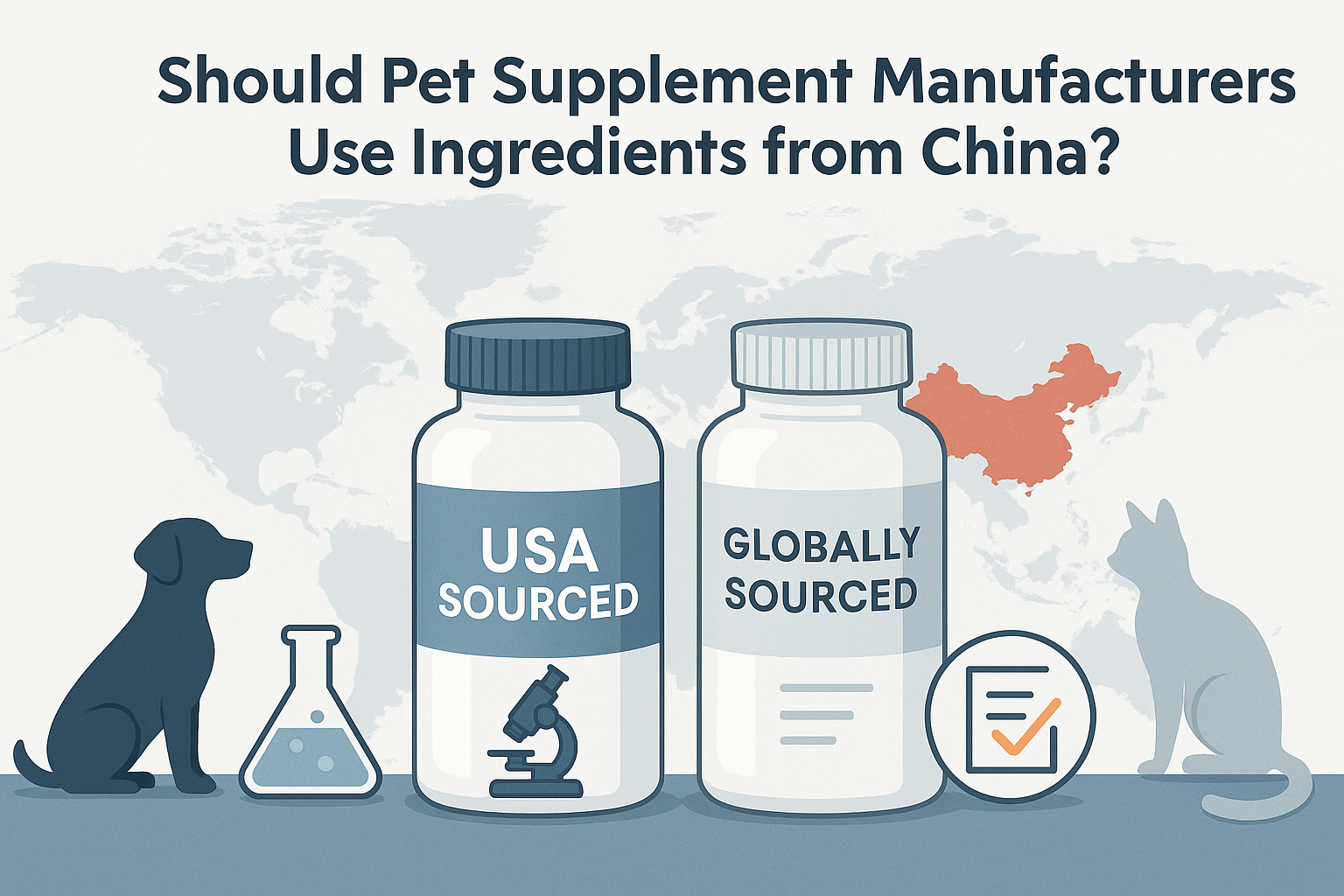
Written By: Pet Tech Labs Team
In the pet supplements world, raw material sourcing isn’t just a cost consideration—it’s a credibility decision. You’re not just mixing powders; you’re feeding someone’s best friend. And when a growing chunk of the industry relies on ingredients from China, the question isn’t just if it’s worth it. It’s what the consequences are when things go wrong.
There’s no shortage of warnings. Headlines, recalls, and contamination scares have fueled suspicion around foreign suppliers—especially when it comes to pet products. But blanket assumptions don’t solve the problem. What manufacturers need is clarity. What’s safe? What’s risky? And how can you protect your customers, your brand, and your margins at the same time?
The 2007 melamine disaster wasn’t a one-off. Chinese suppliers spiked pet food with industrial plastic to fake protein content. Thousands of pets died. The fallout still shapes industry caution today.
While some Chinese factories now follow GMP-like standards, oversight and quality still vary wildly. Without testing and auditing, risk is baked into every batch. For pet products, which don’t fall under the same strict FDA oversight as human supplements, that gap is even wider.
Most brands don’t disclose raw material origin. “Made in USA” often means the blending was domestic, not the ingredients. In fact, taurine, MSM, glucosamine, and B vitamins are almost always sourced from China.
At Pet Tech Labs, we test every batch and document every source. No assumptions. No mystery COAs. That’s how you protect your label, and your customers’ trust.
Cost, volume, availability. Chinese suppliers dominate global supply for key nutrients. In many cases, they’re the only scalable option. But cost savings don’t mean quality compromise—if your controls are airtight.
The risk isn’t geography—it’s laziness. If a supplier can’t produce batch-level test results on demand, walk away. The money you save upfront isn’t worth the liability.
Under FTC rules, a product can say “Made in USA” if it’s encapsulated or bottled here—even if all the ingredients are imported. Consumers don’t know that. They see the label and assume it’s fully domestic. That trust gap can sink you fast if something goes wrong.
Leading brands are choosing transparency: origin disclosures, COA access, and marketing copy that actually means something.
Safe products start with safe inputs. That means no hidden synthetics. No filler binders. Every ingredient disclosed, tested, and traceable. Species-specific formulation matters, too—what works for humans might harm pets.
At Pet Tech Labs, we build systems that protect the product before it even reaches the production line. Because pet parents remember what works—and what didn’t.
Sourcing from China isn’t inherently wrong, but it’s not something you should do blindly. Brands that vet, test, and disclose build longevity. Brands that guess don’t last long.
Pet Tech Labs helps brands do it right from day one—because in this industry, there’s no room for shortcuts.
Some are. But not all. The key is in how they’re sourced, tested, and verified. Without third-party testing for heavy metals, solvents, and microbial contaminants, there’s no way to guarantee purity, regardless of the country of origin.
China dominates global production of many base nutrients, including taurine, MSM, and B-complex vitamins. Manufacturers often choose these sources due to pricing, availability, and volume, but safety depends entirely on their quality controls.
No. “Made in USA” usually refers to where the product was bottled or packaged, not where the ingredients came from. Brands can legally use imported raw materials and still carry that label. Always ask about sourcing and testing.
Most brands won’t disclose this on the label. Red flags include vague sourcing language, lack of COAs, and unusually low price points. Transparency and testing are stronger indicators of safety than country of origin alone.
We use globally sourced ingredients—including from China—but only from vetted, audited suppliers. Every batch is tested for purity and identity, and we provide documentation to our clients. Our promise: full transparency and no shortcuts.
-1.png)
In recent years, the pet supplement industry has seen remarkable growth. Pet owners, increasingly...
Pet Tech Labs Team

Many pet owners spend a significant portion of their pet budgets on joint supplements, probiotics,...
Pet Tech Labs Team

Pet Tech Labs® sets the gold standard for companies looking for top-quality pet supplements and private labeling or contract manufacturing solutions
Pet Tech Labs® is part of the FoodScience® family of brands. Learn more at foodsciencecorp.com
1877 Midland St.
Syracuse, NE 68446
402.269.3195
FoodScience® LLC
929 Harvest Lane
Williston, VT 05495
1-800-451-5190